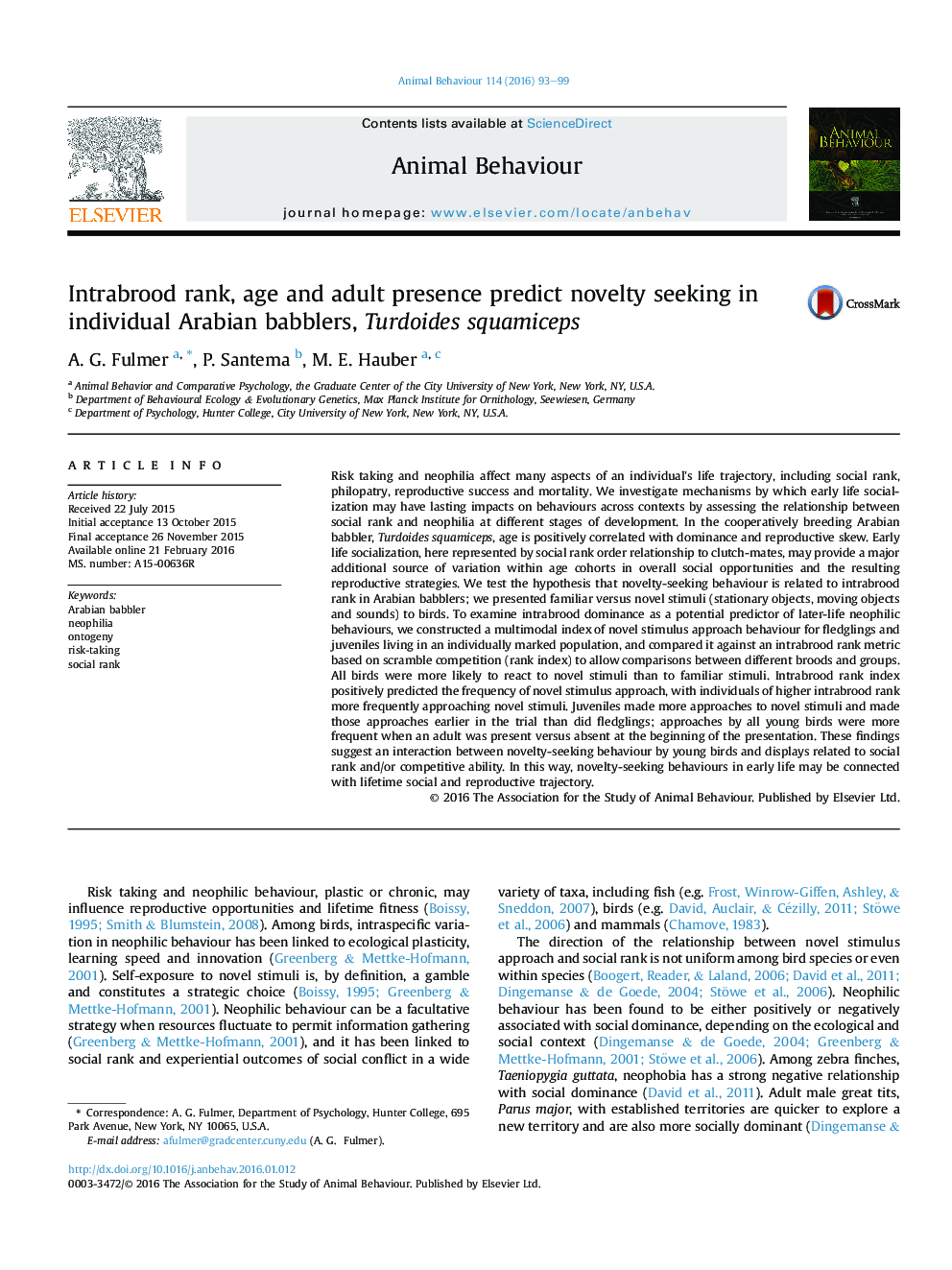| کد مقاله | کد نشریه | سال انتشار | مقاله انگلیسی | نسخه تمام متن |
|---|---|---|---|---|
| 8489177 | 1552214 | 2016 | 7 صفحه PDF | دانلود رایگان |
عنوان انگلیسی مقاله ISI
Intrabrood rank, age and adult presence predict novelty seeking in individual Arabian babblers, Turdoides squamiceps
دانلود مقاله + سفارش ترجمه
دانلود مقاله ISI انگلیسی
رایگان برای ایرانیان
کلمات کلیدی
موضوعات مرتبط
علوم زیستی و بیوفناوری
علوم کشاورزی و بیولوژیک
علوم دامی و جانورشناسی
پیش نمایش صفحه اول مقاله

چکیده انگلیسی
Risk taking and neophilia affect many aspects of an individual's life trajectory, including social rank, philopatry, reproductive success and mortality. We investigate mechanisms by which early life socialization may have lasting impacts on behaviours across contexts by assessing the relationship between social rank and neophilia at different stages of development. In the cooperatively breeding Arabian babbler, Turdoides squamiceps, age is positively correlated with dominance and reproductive skew. Early life socialization, here represented by social rank order relationship to clutch-mates, may provide a major additional source of variation within age cohorts in overall social opportunities and the resulting reproductive strategies. We test the hypothesis that novelty-seeking behaviour is related to intrabrood rank in Arabian babblers; we presented familiar versus novel stimuli (stationary objects, moving objects and sounds) to birds. To examine intrabrood dominance as a potential predictor of later-life neophilic behaviours, we constructed a multimodal index of novel stimulus approach behaviour for fledglings and juveniles living in an individually marked population, and compared it against an intrabrood rank metric based on scramble competition (rank index) to allow comparisons between different broods and groups. All birds were more likely to react to novel stimuli than to familiar stimuli. Intrabrood rank index positively predicted the frequency of novel stimulus approach, with individuals of higher intrabrood rank more frequently approaching novel stimuli. Juveniles made more approaches to novel stimuli and made those approaches earlier in the trial than did fledglings; approaches by all young birds were more frequent when an adult was present versus absent at the beginning of the presentation. These findings suggest an interaction between novelty-seeking behaviour by young birds and displays related to social rank and/or competitive ability. In this way, novelty-seeking behaviours in early life may be connected with lifetime social and reproductive trajectory.
ناشر
Database: Elsevier - ScienceDirect (ساینس دایرکت)
Journal: Animal Behaviour - Volume 114, April 2016, Pages 93-99
Journal: Animal Behaviour - Volume 114, April 2016, Pages 93-99
نویسندگان
A.G. Fulmer, P. Santema, M.E. Hauber,